Mark Sisson's Blog, page 337
June 6, 2013
The Stigma of Obesity
 One of the things I love about positive-focused healthy lifestyle communities (like but not limited to MDA) is the genuine support that exists for people to take charge of their well-being. It’s the collective excitement when others transform their bodies and health. It’s the willingness to offer help and advice, personal anecdotes and perspective to those beginning their journeys or struggling with the process. In the bigger framework of society, and even occasionally in these positive communities, however, weight-related stigma still holds sway. In these more subtle demonstrations, it becomes a sort of “if you’d only do X” assumption, a looking down one’s nose at someone else’s grocery cart or an unconscious judging that faintly influences impressions and interactions.
One of the things I love about positive-focused healthy lifestyle communities (like but not limited to MDA) is the genuine support that exists for people to take charge of their well-being. It’s the collective excitement when others transform their bodies and health. It’s the willingness to offer help and advice, personal anecdotes and perspective to those beginning their journeys or struggling with the process. In the bigger framework of society, and even occasionally in these positive communities, however, weight-related stigma still holds sway. In these more subtle demonstrations, it becomes a sort of “if you’d only do X” assumption, a looking down one’s nose at someone else’s grocery cart or an unconscious judging that faintly influences impressions and interactions.
We live, of course, in a culture, obsessed by body image and weight. Celebrities are skewered on the covers of magazines for gaining (or losing) weight. Advertisements for diet products, often designed with questionable taste, are at every street corner and commercial break. For weekly entertainment, we watch obese people battle their weight on T.V., ominous music and trainers screaming in the background. Within this swirl of society jokes, cultural judgment, and media images, the obesity/overweight stigma is ubiquitous. Far beyond the intention to help, the function becomes to exploit. Outside any interest in being supportive, the focus becomes voyeuristic and, at times, self-congratulatory.
Some say the obesity/overweight stigma is the last allowable prejudice. Although I think there’s enough animosity and judgmentalism in the world to debate the statement itself, I understand the central point. Researchers have time and again measured the “anti-fat bias” (effects ranging from outright discrimination to unconscious stereotyping) at work in everything from employment to health care. Obesity/overweight stigma figures into the collective consciousness far more than we often give it credit for – lurking in places and people we’d assume would be immune to its effects.
Physicians themselves, numerous studies show, demonstrate a significant anti-fat bias. Just a few weeks ago, a published study reported 40% of medical students demonstrated an unconscious weight bias. Research has illuminated anti-fat bias in therapists and even health professionals within obesity related specialties.
With all this, research shows primary physicians are offering less weight loss counseling to their patients – particularly those with high blood pressure or diabetes. Karen Hitchcock, a physician who works in an obesity clinic with a bariatric surgeon’s group, offers a candid and surprisingly personal glimpse at the discomfort of a physician who struggles with counseling her patients: “The emotion in the room thickens; I am acutely aware of the shame my patients feel.” As critical as the need is for honest consultation, her perspective is hard to dismiss.
Finally, the kicker. Research shows that the social bias remains even after people lose weight – and can be as strong against those who were obese and lost their excess weight as as it for people who are currently obese. As someone in the health and weight loss business, this is the hardest to hear. I can’t quite imagine what it’s like for a person who actually experiences that bias.
I think it’s clear I believe in people taking personal responsibility for their health and well-being. That said, I also understand the reasons for obesity are varied and complicated. Genetics do play a role, and for some people it simply takes more effort. Thyroid, other hormonal issues, and even toxin exposure can throw a wrench in the best weight management endeavors. On a cultural level, too many people have little access to fresh food and even fewer to real nutrition education. Too many grow up with the unchallenged influence of incessant junk food marketing and perhaps poor familial modeling at home and school. As Karen Hitchcock suggests, “We live in a society that judges people for being fat, yet has in place every possible means for making them so.”
Physiology is physiology. The biological facts behind obesity are constant, yes. The personal picture of one’s weight – not to mention each person’s experience of it – however, is much more complex than any stereotype or momentary judgment can begin to tell.
When we simplify other people’s stories, I think the person we end up diminishing is ourselves. My mother used to constantly say “Worry about yourself.” Sure, it was generally in response to sibling quarrels or school yard gossip, but it gained dimension as I grew older. To this day, it’s one of the most abiding pieces of wisdom I’ve ever come across. It doesn’t mean of course, don’t appreciate other people or help where and when you can. After all, life is about connection. Happiness and health are about connection. That said, we miss the point when we bring a self-grandiosity or condescension to that engagement. We do better when our support for others comes from a place of personal humility.
If we’ve been successful in losing or managing our weight, that’s a great accomplishment. If we’re working on it, we’re worthy of respect and genuine support in our efforts. If we’re not to that point yet, we’re still worthy of the same respect. It’s been my observation people are more inclined to invest in themselves – and believe in the support of others – when they believe in their own worthiness. When we choose to question the obesity stigma, whether we’ve ever personally fit that category or not, we value – for ourselves and others – living as healthy but also “whole” people. That’s, to me, the best endeavor for thriving.
Thanks for reading today, everyone. I hope you’ll share your thoughts and comments on the obesity/overweight stigma. Have a great end to the week.
Get the 7-Day Course on the Primal Blueprint Fundamentals for Lifelong Health Delivered to Your Inbox for FREE

June 5, 2013
The “Inevitabilities” of Aging: How Inevitable Are They?
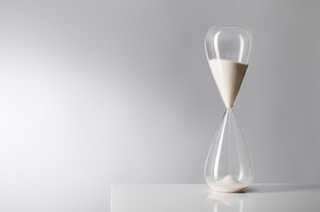 How many times have you heard some old timer attribute the dysfunction of a body part or physiological attribute to “gettin’ old”? Or how about that time you tweaked your back and everyone was quick to tell you to get used to it because it’s never going to get any better? “It’s all downhill after 30!” The funny thing is that this is somehow supposed to make you feel better about your prospects. Some people, I guess, prefer to have control over their health wrested out of their hands and distributed to the fates. Some people like the idea of letting “nature take its course.” At least that way nothing that goes wrong is your fault, because you never had a chance anyway. You were always destined to get all soft and flabby, lose your hearing, get brittle bones, and be unable to go to the toilet by yourself. Right?
How many times have you heard some old timer attribute the dysfunction of a body part or physiological attribute to “gettin’ old”? Or how about that time you tweaked your back and everyone was quick to tell you to get used to it because it’s never going to get any better? “It’s all downhill after 30!” The funny thing is that this is somehow supposed to make you feel better about your prospects. Some people, I guess, prefer to have control over their health wrested out of their hands and distributed to the fates. Some people like the idea of letting “nature take its course.” At least that way nothing that goes wrong is your fault, because you never had a chance anyway. You were always destined to get all soft and flabby, lose your hearing, get brittle bones, and be unable to go to the toilet by yourself. Right?
Wrong. Age isn’t “just” a number, and we can’t maintain Dorian Gray-esque vigor all through life, but that doesn’t mean we’re destined to be frail, brittle things relegated to chairs and walkers and homes and doctor’s offices.
Today, let’s take a look at some common “inevitabilities” of aging and why they may not be so inevitable after all.
Loss of Testosterone
Most men see the age-related decline in testosterone as inevitable, and who can blame them? Testosterone levels do generally decline with age. Younger guys generally do pack on muscle faster and easier than older guys. The association is strong, constant, and almost unwavering. But it’s not inevitable. The passage of time, the changing of seasons, the number of candles on your gluten-free birthday cake do not determine your production of testosterone. Rather, what you do, what you eat, how you exercise, how much body fat you carry, and how much stress you deal with all affect your testosterone levels.
A generational drop in testosterone has been observed. Twenty years go, men of all ages had higher testosterone levels than their counterparts today, meaning an average 50 year old guy in 1993 had higher testosterone than an average 50 year old guy in 2013. Something other than aging is lowering testosterone across the board. This shows that T production is subject to other factors, not just aging.
A recent study found that the “age-related” declinations in testosterone were modified by body weight changes and other lifestyle factors. As body weight went up, T went down. As body weight went down, T went up. As a side note, smoking cessation was associated with a lowering of testosterone, but I wouldn’t recommend picking up the habit as a way to curb T decline. Another study found that metabolic syndrome exacerbates testosterone deficiency.
As long as they maintained “excellent or very good health,” men over the age of forty experienced no declines in testosterone in a recent study. Those who did experience declines appeared to do so because of other “disorders that accumulate during aging, including obesity and heart disease.” Age itself had no independent effect.
Cortisol, the stress hormone which opposes testosterone, tends to increase with age. Higher cortisol, lower testosterone. Controlling your stress may not ensure high testosterone, but at least you’ll be taking care of one potential factor.
What about women? Women make and use testosterone, too, but their relationship with the hormone isn’t the same as men’s. As I mentioned earlier, men can stave off age-related testosterone deficiency by staying healthy and avoiding metabolic syndrome. In women, obesity actually increases circulating testosterone levels. This is because women make testosterone in body fat, in addition to the ovaries and adrenal glands. But before you go and gain a bunch of testosterone-boosting body fat, you should realize that women are extremely sensitive to testosterone’s effects. Too little testosterone is bad and associated with a lagging libido, lower lean mass, heart disease, and poor bone density, but too much testosterone is associated with type 2 diabetes, PCOS, and breast cancer (although this breast cancer connection may be explained by the conversion of excess testosterone into estradiol, and other evidence suggests that testosterone may even be protective against breast cancer).
So, as women age, they’re not so much concerned with “increasing testosterone.” They’re trying to keep their production in the sweet spot that maintains libido, bone, and muscle health without venturing into excess. But I strongly suspect that staying healthy, avoiding metabolic syndrome, and controlling stress will help women just as much as men.
Creaky Joints
Back when I was running, eating, and training like a madman, I had fairly bad arthritis. But not in my knee, or my hips, or my ankles. I had arthritis of the fingers, arthritis so severe that I had trouble holding a pen at times. I figured it was just part of getting old (like everyone told me) and tried to make the best of it. Maybe I’d even be one of those guys that can predict the weather based on the pain level in his joints. When I went grain-free, however, the arthritis evaporated. It just stopped. Now, although there’s not a lot of research into diet and arthritis, there is some strong evidence that rheumatoid arthritis, an autoimmune disease, can be exacerbated by dietary lectins from grains and legumes. The conventional wisdom is that osteoarthritis is purely “wear and tear” arthritis, separate from rheumatoid arthritis, independent of dietary and inflammatory factors, and pretty much inevitable if you live long enough, but (obviously) I disagree.
Other than dietary factors, simple, chronic inactivity is the major causative factor in the development of stiff, creaky joints. There are no studies on the subject that I know of, but we all know it to be true. Just ask yourself: how do you feel after a day of sitting on your butt and being sedentary? Stiff, tight, and altogether immobile. Now, imagine an entire lifetime of that, and you get the oldster who can’t tie his own shoes or get up off the toilet.
Loss of Lean Mass
True, people tend to lose muscle mass as they age, but that’s primarily because they tend to stop exercising – if they ever did in the first place. Some muscle loss just happens, but not all, or even most of it. We can and should maintain lean mass as we age. Grandma isn’t likely to get ripped, but many studies show that seniors can still gain lean mass through resistance training:
Even immediately after hip surgery, the elderly can utilize resistance training to put on lean mass.
In elderly women, resistance training induces hypertrophy and lowers inflammation.
Stroke survivors (aged 50-76) were able to enjoy significant hypertrophy with strength training.
Even in subjects older than 80, strength training seems to counter the effects of sarcopenia, or muscle wasting.
Heartening, eh? Just be wary of trying to do too much; one study of older subjects showed that strength training alone was more effective at inducing hypertrophy than a combination of strength and endurance training.
Another cause of muscle wasting in the elderly is low testosterone, which we’ve already covered above. Take steps to mitigate that and resistance training will be even more effective.
Brittle Bones
It’s a terrible thing, to slip and fall in the shower, or while walking through the neighborhood, and end up with a broken hip or wrist for your trouble. It doesn’t have to be that way, though. It shouldn’t be that way, just because you gained a few years.
Nutritional factors certainly play a role:
Vitamin D, which we can get from sun, food, or supplements, is crucial for maintaining bone mineral density. Without it, we’re unable to utilize calcium.
Vitamin K2 is also important and has been shown to improve bone mineral density in older folks with osteoporosis. Without it, we’re unable to put calcium where it belongs (in bones).
Calcium intake, particularly from food (and dairy if you tolerate it), helps determine bone health. We sometimes forget about the raw building blocks in favor of the co-factors (perhaps because conventional wisdom has done the opposite), but we shouldn’t. It matters, too.
Though they get less attention than the previous three, other nutrients, like potassium and magnesium (to name a couple) are also required for good, strong bones.
But nutrition is useless without activity – physical stimulation of the musculoskeletal system. In order for exercise to improve bone mineral density, it must satisfy several requirements. It should be dynamic, not static. It needs to challenge you. You need to progress in weight, intensity, and duration. It should be “relatively brief but intermittent.” No long drawn out sessions that do nothing but overwork and overtrain you. Keep it short and intense. Also, the exercise should place an unusual loading pattern on the bones. That could be different movements, or increased resistance, as long as you’re introducing something “new” to the body. Finally, for exercise to improve bone mineral density it must be supported by sufficient nutrition, especially calcium and vitamin D.
Hearing Loss
Everyone’s got a grandpa whose favorite word is “Huh?” and everyone “knows” that your hearing goes the older you get. But why? Is it a feature inherent to aging? While there’s indeed something called presbycusis, which describes the cumulative effect of aging on hearing, it’s difficult to disentangle true presbycusis from all the other factors that can also affect our hearing. First, of course, is our exposure to noise, either repeated (working in a metal shop) or traumatic (witnessing a massive explosion). The more noise we hear, and the louder it is, the faster our hearing goes, all else being equal. Consider the classic study of the Mabaan people of the Sudan. The Mabaan were completely isolated from industrialization, and without firearms, cars, factories, or any other manmade sources of loud noises, the hearing of their elderly was just as sharp as the hearing of Westernized young adults. It hadn’t degraded at all over the years, showing that noise exposure, rather than aging, is the main arbiter of hearing ability.
At the heart of noise-induced hearing loss appears to be oxidative stress. Upon a loud enough noise, the overstimulated hair cells within the ear generate reactive oxygen species, which damage the cells and eventually impair hearing. Studies have shown that boosting endogenous antioxidant (glutathione) status following noise exposure can reduce hearing loss. Preliminary evidence suggests that dietary precursors to glutathione (NAC) can also reduce hearing loss. It’s likely that eating a diet rich in polyphenols, flavonoids, and other antioxidant compounds could have similar preventive effects. This might be our best bet, short of escaping civilization and avoiding all loud noises.
As people age, their lifestyles suffer. They work more and longer hours. They sleep less. They accumulate more stress, and do more stress-eating. They stop moving as much, particularly if their new adult jobs force them to sit for eight hours a day. They live more poorly, and, in turn, suffer many of the health maladies we regard as “part of getting old.” I’m not suggesting that aging has zero effect on our physiological health. If nothing else, it makes us more vulnerable to our poor lifestyles and gives us more time to accumulate further damage (loud noises, stress-causing responsibilities, etc). I’m just saying that we give it a lot more power that it deserves. By doing that, we cede control over our own health to some abstract function of space-time. If aging is gonna get ya, it’s gonna get ya. Let’s do our best to hold it off at the pass, shall we?
Get the 7-Day Course on the Primal Blueprint Fundamentals for Lifelong Health Delivered to Your Inbox for FREE

June 4, 2013
What You Should Know About Poultry Production Claims
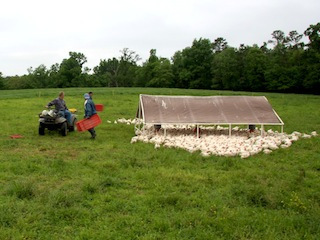 I’m grateful to have our friend David Maren of
Tendergrass Farms
pen today’s guest post. This is the first post in a three part series on the assertions that retailers make about the way their poultry, pork, and beef is raised. And don’t miss the coupon code that he’s generously provided at the end of the post!
I’m grateful to have our friend David Maren of
Tendergrass Farms
pen today’s guest post. This is the first post in a three part series on the assertions that retailers make about the way their poultry, pork, and beef is raised. And don’t miss the coupon code that he’s generously provided at the end of the post!
Every year in the United States the average person eats about 66 pounds of poultry, comprised of about 53 pounds of chicken and 13 pounds of turkey.1 Nearly every pound of poultry sold in the US is raised in confined animal feeding operations (CAFO’s) but the poultry industry is very aware of the growing demand for naturally raised alternatives. Americans spend more than $50 Billion on chicken and turkey annually2 so the financial incentive for them to cater to this shifting demand is gigantic. A few independent farms have opted to actually change the way they raise their birds but improving poultry production practices, especially raising poultry outdoors on pasture, raises the labor costs of production dramatically. For this reason many companies have decided to turn to clever marketing techniques to meet the demand for alternatives instead of actually changing the highly profitable CAFO-style system in which their birds are raised. Today, poultry production claims that boast about the superiority of certain brands’ “organic,” “cage free,” “hormone free,” or “free range” poultry can be seen almost everywhere from poultry labels in grocery stores to restaurant menus and even online meat shops’ product descriptions. Tragically, these poultry production claims are often relatively meaningless. They’re designed to paint a picture of what the customer wants to buy without requiring significant changes in the old CAFO poultry production model.
From my perspective as a grass fed and pasture raised meats farmer, the claims and the intricate marketing loopholes that poultry companies have manufactured to carve out their portion of the often ignorant and uninformed public seem extremely harmful – both to the farmer who is trying to do things right and competing in the marketplace and the consumer who isn’t eating what they think they are. Ultimately, meat companies depend on people not informing themselves and I’d like to work against that.
It’s important to start by realizing that many times poultry companies depend on their customers making assumptions about their products. Legally, they cannot technically lie on their labels, websites, or restaurant menus so a wide variety of hazy and unclear production claims are utilized to deceptively lead uninformed consumers to believe things about how their birds were raised that simply are not true. Although I cannot give an exhaustive analysis of every possible poultry production claim that’s used today I’ll do my best to shed some light on several of the terms most commonly used in the poultry industry.

A Perdue brand “Cage Free,” vegetarian fed chicken label
“Cage Free,” Vegetarian Fed
The above label is from a Perdue brand pre-cooked whole chicken. The label has a lot on it but let’s focus in on the fact that Perdue boasts that its product was “raised cage free.” The term “cage free” means, of course, that the chicken was raised in some fashion that did not require it to live in a cage. There’s only one problem with that: no chickens or turkeys are raised for meat in cages anywhere in the world. As you’ve probably seen in photos of big chicken confinement houses, typically upwards of 20,000 chickens are packed into a warehouse-style building without a single cage. The truth is that using cages to raise chickens (or turkeys) for meat would be extremely expensive, difficult, and all-around just plain impractical. Notably, egg layer chickens are often confined to cages so it would appear that companies that claim to offer “cage free” poultry are using that fact to their advantage in hopes that consumers won’t notice the difference. Reality is that caged chicken is pretty hard to come by unless you’re eating very cheap canned chicken soup made from old spent layer hens.
In addition to the “cage free” claim, Perdue says that their chicken is fed an “all vegetarian diet.” While that may sound heartwarming at first I don’t think it’s quite as significant as one might presume. Chickens and turkeys are by nature omnivores, not vegetarians. There’s nothing they love more than a good juicy worm, cricket, or beetle. Their beaks and claws are perfectly designed to enable them to find and catch little meaty insects or even a small snake or two every once in a while. I’d be willing to bet that to a chicken the thought of having to be a vegetarian for their entire life is very depressing. (Perhaps this is something you could relate to.)

A Trader Joe’s brand “free range, USDA Organic chicken label
“Free Range”, USDA Organic
This Trader Joe’s chicken label makes several interesting claims but let’s first take a look at the fact that it crows that it is “Free Range.” The USDA’s definition of “free range” states that the birds must have “continuous access to the outdoors during their production cycle.”3 Doesn’t that sound just wonderful? When you read that you probably get an image in your mind of a quaint flock of a few hundred chickens pecking around in a grassy meadow beside a red barn where they roost at night to get away from the neighborhood fox. While the definition of free range theoretically could include that, the financial side of actually raising chickens on pasture is pretty hard-hitting. In most cases, “continuous access to the outdoors” is interpreted to mean that a cat door or similar contraption is screwed to one end of an existing warehouse-style confinement house where, at least in theory, the birds could venture out onto a dirt lot every once in a while if they pushed their way through the door. Note that that the regulation does not specify that the birds need to be taught to actually take advantage of their “access to the outdoors.” Truth be told, most free range chickens and turkeys never make it outside to see the light of day on the imaginary “range” that they have “access” to.
Granted, this doesn’t mean that every single farm, brand, or company that claims that their poultry is “free range” is necessarily a sham. But let’s think about this. If for you, the poultry company, the entire purpose of your production claims is to differentiate your products from those of other companies, and your birds were raised to superior standards than those that would qualify your product to be called “free range,” wouldn’t you avoid using that term for fear that consumers might not appreciate the unique standards that your farmers were adhering to? Most producers who really are going the extra mile to truly raise their animals on pasture would never use a term that would fail to distinguish their product from the common deceptively labeled “free range” products found in the grocery store. The cost of raising truly pastured poultry is many times that of raising poultry to the USDA’s “free range” standard so real pastured poultry farmers want their customers to see the difference so that they’ll pay a premium price. Look for the term “pastured” or “pasture raised” if you want a bird that was actually raised out on the free range.
The term “USDA Organic” brings along with it a plethora of USDA regulations and loopholes that I won’t even start to try to unravel here. What I would like to shed some light on, however, is a little bit about what “USDA Organic” does not mean. As a person who has spent countless hours tending to chickens and turkeys out on real grassy pasture the most striking point to make about “USDA Organic” poultry is that it is in fact not actually required to be raised outdoors as many people assume. As with the term “free range,” “USDA Organic” poultry must technically have “access for all animals to the outdoors.”4 The term access, once again, usually refers to some type of small door at the end of a conventional confinement house which the birds may or may not really use. Unless the terms “pasture raised” or “pastured,” are used, when you see “USDA Organic” chicken or turkey think “CAFO birds raised on certified organic feed without antibiotics.”
Trade Names, “Antibiotic Free” and “Hormone Free”
As I mentioned previously, it is always best to make sure that you don’t make assumptions about a product’s production claims until you know the whole story. Some online grass fed meat retailers will use trade names that include the word “grass” when describing their poultry products even though their poultry isn’t actually raised in grass. For example, a company may call it “grass prairie” poultry or “grassland” poultry. I don’t know about you, but when I see terms like that in the name of a natural chicken product I think it would sure seem to imply that the birds had some kind of relationship to land that has grass on it. Not so fast, my friend. I contacted one such company (that will go unnamed since I can’t corroborate the following conversation) recently. Their customer service representative informed me that “grass prairie poultry” is actually a trade name. I asked the representative if the product I was looking at on their website, their ground chicken, was pasture raised outdoors. She responded that the chicken was “free roaming.” I pressed a bit harder to try to find out if these birds were actually raised outdoors. Finally, she conceded that they were actually raised indoors but that they had “some access to sunlight” and that the birds were never “crated.” It sounds to me like there’s at least one window in each of their confinement houses. Incredible. The claim that they were not “crated” was almost precisely the same as Perdue’s phony “cage-free” claim above. Sorry, nobody raises meat chickens in “crates.” It’s critically important to scrutinize even your most trusted primal/paleo meats suppliers in order to hold them accountable to high standards with regard to straightforward marketing. Even your most beloved online meats shop may be taking advantage of your ignorance by using trade names to deceive you into assuming that their products are raised to higher standards than they actually are.
Additionally, many companies boast that their chicken is raised without hormones or antibiotics. As it turns out, federal regulations have never permitted hormones or steroids in poultry3 so this statement is somewhat comparable to someone claiming that their bottled water is “fat free.” Sure it is. But that’s only exciting if you know nothing about water. For the record, Tyson, Perdue, MacDonald’s, and even Wal-Mart’s Great Value chicken is also raised without artificial hormones.
The claim that ground chicken is “Antibiotic Free” is, on the other hand, a legitimate claim a company could make about a poultry product. Much of the conventional poultry raised in this country is fed subtherapeutic antibiotics every day of their lives. “Subtherapeutic” refers to the fact that these antibiotics are not meant as a specific therapy or cure for a disease but that they are intended as a growth promotant that improves the birds’ feed conversion ratio.
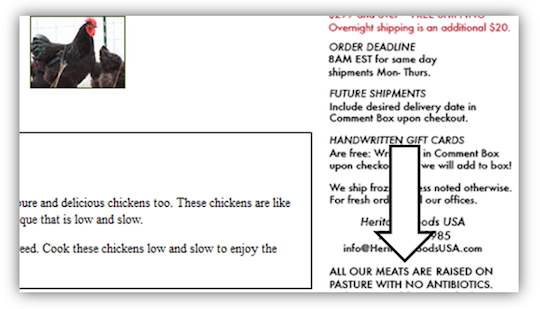
A screen shot from a Heritage Foods USA chicken product description page that uses the claim “raised on pasture”
“Raised on Pasture,” “Pastured”
As you can see in this Heritage Foods USA website screenshot, they boast that their birds are “raised on pasture” which is synonymous with “pastured.” This claim specifically indicates that the birds were actually raised outdoors and I have a neighbor here in southwest Virginia who has raised birds for this outfit so I can assure you that this is the real McCoy. However, as with the other claims we’ve looked at so far, it’s important to know the details before supposing too much. One common assumption is that chickens and turkeys raised on pasture only eat glass, clover, and other green leafy plants with no supplemental feed. This is virtually never the case. Being that cows are ruminants they can efficiently derive all of their necessary nutrients from forage alone (which ought to always be the case with grass fed beef) but this is not the case with poultry. Because of their comparatively simple digestive systems they need at least some highly concentrated protein in their diet.
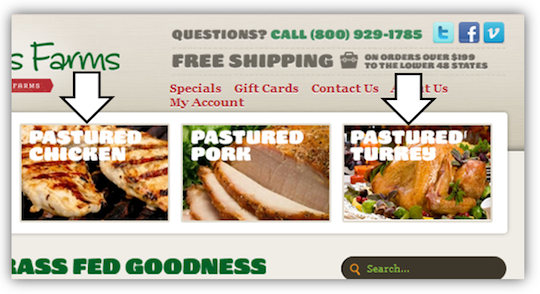
A screenshot showing that Tendergrass Farms claims that their chickens and turkey are “pastured”
In theory, a pastured or pastured raised bird’s protein source could just be bugs. When a farmer has, for instance, ten or fifteen chickens on their farm at a given time the naturally occurring insects in his fields are probably sufficient. The only problem with that is that the maximum profit per chicken that any pastured chicken farmer can expect to net is between $3.00 and $4.00 for raising each bird. (Some farmers who peddle their chicken at farmers markets may claim to make more but they must recognize that their extra “profit” is actually generated by their marketing efforts not their farming.) This means that in order for a pastured chicken farmer to earn, for example, $30,000 net income per year he or she must raise about 10,000 chickens each year. While this is a miniscule number compared to the hundreds of thousands that are raised annually by the typical CAFO chicken farmer, the number of insects that would be needed in order to keep the pastured birds fat and happy on bugs alone would be staggering. For this reason pastured poultry farmers give their chickens and turkeys ample high protein feed in addition to the forage and insects that they eat out in the pasture. This feed, at least in the case of the ration Tendergrass Farms partner farmers use, consists of non-GMO whole roasted soybeans and non-GMO corn with a touch of fish meal (for which our very non-vegetarian birds are quite grateful) but pastured poultry feed formulas vary considerably from farm to farm. In most cases, after the first few weeks of life subsequent to hatching during which the baby chicks are still too weak to survive outdoors, the birds have some type of mobile shelter that is moved onto new pasture every single day throughout their lifespan which protects them from the sun, rain, and predatory hawks (see the photo at the top of this post).
Just Ask Your Farmer, (or Google it)
There are a remarkable number of poultry production claims that I wasn’t able to cover in this post. Notice for example the fact that here at Tendergrass Farms we call our poultry and pork “Beyond Organic.” Just take the time to poke around and investigate the true meaning of the production claims you encounter. If your farmer, restaurant, grocery store, or online meats shop is honest they’ll be proud to define their terms. On our website we’ve dedicated an entire page to telling you just exactly what “Beyond Organic” means. Once you find out how the poultry was actually raised you can make an informed decision before you make your purchase. Just because a certain company’s poultry wasn’t raised outdoors doesn’t mean it’ll kill you. But don’t you want to know if you’re paying a premium price for a product that was raised in a very similar manner to Tyson’s?
Free Pastured Beyond Organic Ground Turkey!
With my last guest post we gave away a bunch of free pastured turkey breast and you guys seemed to love it so I decided we should do that again this time with ground pastured turkey. The rules are all the same but this time you get 10 pounds of pasture raised ground turkey instead of 8 pounds of pastured turkey breast.
Now that you know how different pastured poultry really is, we’ve created a coupon code that’ll give you ten (10) free one pound packs of our pastured ground turkey (a $99.90 value) with all orders over $199 which will also qualify your order for Free Shipping. Just head over to the Tendergrass Farms online grass fed meats store and toss $199 of our yummy grass fed beef, pastured pork, pastured chicken, or pastured turkey into your cart. When you’re ready to check out just apply the coupon code TRUST-US-ITS-REAL-10 in order for ten (10) pounds of pasture raised ground turkey to be miraculously added to your cart at a price of $0.00 (expires 9/30/13, limited to 135 redemptions, while supplies last).
Tip: If $199 sounds like a big first order just grab a couple friends from the gym and place an order together.
References:
1As of 2000, according to the USDA Factbook, Chapter 2, page 14: Profiling Food Consumption in America
2Based on 2010 broiler production statistics published by the USDA
3This regulation is posted on the USDA website under “National Organic Program.”
4Code of Federal Regulations, Title 7 § 205.239: Livestock living conditions.
David Maren is a husband, father, farmer, and co-founder of Tendergrass Farms. Tendergrass Farms is a cooperative-style online grass fed meats shop that exists as a bridge between the often geographically isolated family farmer and committed grass fed meats enthusiasts like yourself. The Tendergrass Farms vision is to sustain family farms through making it easy for you to purchase their meats by taking advantage of appropriate technology and ultra-efficient transportation models that enable their meats to be shipped to fans all around the USA.
If you’re not already a huge fan of Tendergrass Farms, you’re missing out: Go bookmark
their site
, like their
Facebook page
,
follow them on Twitter
, and check out their grass fed blog!

June 3, 2013
Dear Mark: Gallbladder-less, CrossFit on Hiking, and Gluten Cutter
Reminder: Today is the last day to get free bonus items when you order a copy of Primal Cravings. Read all the details here.
 We’ve got a three parter for today’s edition of Dear Mark. First up is a question about gallbladders and a Primal way of eating. Or, more specifically, the lack of a gallbladder, and how one can make Primal work without one. Just because your ability to digest fat is a bit impaired doesn’t mean you can’t eat this way. Next, I explore what CrossFit really thinks (or doesn’t) about walking, hiking, and other sorts of frequent slow moving. After all the anaerobic WODs, is there room for a relaxing walk with your significant other? And finally, I discuss the usefulness – or not – of Gluten Cutter and other gluten digestive aids. These products claim to help even sensitive people digest and detoxify gluten safely, but are they legit?
We’ve got a three parter for today’s edition of Dear Mark. First up is a question about gallbladders and a Primal way of eating. Or, more specifically, the lack of a gallbladder, and how one can make Primal work without one. Just because your ability to digest fat is a bit impaired doesn’t mean you can’t eat this way. Next, I explore what CrossFit really thinks (or doesn’t) about walking, hiking, and other sorts of frequent slow moving. After all the anaerobic WODs, is there room for a relaxing walk with your significant other? And finally, I discuss the usefulness – or not – of Gluten Cutter and other gluten digestive aids. These products claim to help even sensitive people digest and detoxify gluten safely, but are they legit?
Let’s go:
Hi Mark,
I wonder if you have any advice for those of us who wish to eat primally but don’t have our gallbladders anymore, and are therefore lacking some of our body’s equipment for digesting fat. I have been eating more-or-less primally for about 3 months now, and while a lot of my gastro-intestinal problems have cleared up as a result, I find that on days when I eat a higher proportion of fat I have a lot of pain and discomfort that I know from experience is related to the gallbladder removal. For a long time after my gallbladder removal I could eat hardly any fat without serious consequences; these days I can eat rather more but the quantities promoted by the Primal Blueprint diet are rather beyond what I can cope with. I do not want to go back to getting calories from grains and sugar as I have experienced how much better life is without them (thanks to Marks Daily Apple!). Do you have any suggestions for how to manage being primal and eating a high fat diet without a gallbladder?
Thanks,
Sarah
The gallbladder is a storage facility for bile produced by the liver. It also serves to concentrate the bile during storage, making it more potent. When fat is consumed, the gallbladder releases bile into the small intestine to help emulsify the fat. Once emulsified by bile into much smaller droplets, fat can then be more easily digested by lipase (the fat-digesting enzyme). Without emulsification, the fat globules remain large and mostly inaccessible by lipase. Emulsification increases the surface area of the globules and allows greater access and more complete digestion. So, although your liver will still produce bile without a gallbladder, it will not longer be concentrated in the gallbladder and super potent.
So yes, when it comes down to it, you simply don’t have as much fat-digesting equipment as most people. That’s fine, and you can still eat healthy and Primal, but it does mean your ideal macronutrient ratio may look slightly different from mine or the next person’s. Don’t think you have to eat the quantities of fat promoted by others. I like the high-fat approach for myself and most other people coming from a Standard American Diet, simply because it seems to work best. You have to work with what you’ve got. You can’t try to replicate what others are doing because those people aren’t you and they aren’t dealing with your situation. You may – gasp – have to eat less fat than you thought you would be eating on a Primal eating plan. As long as you stick to the basics – animals, plants, good fats – and avoid grains, refined sugar, and processed seed oils, you’ll do great. Heck, it seems like you’re already doing great. Tweak the fat, carb, and protein ratios until it works for you, and don’t get caught up in any kind of perceived “ideal macro ratio.”
There are also a few other ways to support your gallbladder-less digestion:
Ox bile: Since you don’t have a gallbladder, supplementing with ox bile can partially replace the bile your nonexistent gallbladder would have been producing. To use, take a 500 mg (the usual starting dose for ox biles) pill a few minutes before consuming fat. Note your digestion and the supplementary bile:dietary fat ratio. If all is well, you likely have the right dose. If you get diarrhea, you may need a different dose next time.
Bitters: We possess the ability to perceive bitter tastes for a couple reasons. First, “bitter” often indicates the presence of toxins or poisons. When something is bitter, we know to be wary of it (and sometimes, that bitterness indicates the presence of polyphenols (plant “toxins”), which in adequate amounts can act as healthy hormetic stressors to increase antioxidant action in our bodies). Second, bitter herbs – and the concoctions made from them – have the interesting tendency to stimulate the digestive process. When something bitter is tasted, salivation increases, gastric acid production increases, pepsin (which breaks down protein) is released, and bile production is upregulated in the liver. This may be the body’s way of moving things forward to get the offensively tasting food (and possible toxin) out of the body quickly, but it has the helpful effect of stimulating digestion of all subsequently consumed foods. If you don’t have a gallbladder, using bitters ten to fifteen minutes before eating a meal that contains fat might help you produce more bile than you otherwise would.
Though I haven’t used it expressly as a digestive aid, I do keep a bottle of Angostura bitters around in case I want to make the odd rum cannonball or Carrie makes sangria for a party.
Short-chain fats: Shorter chain fats, like coconut oil and pastured dairy, require less “work” from the gall bladder. When you do add fat, consider favoring these sources.
Good luck and let me know how it goes!
Dear Mark,
First of all, I want to say that I greatly respect you for all that you do to educate people about health.
I know that you advocate low level aerobic exercise. However, I have read that you also advocate CrossFit, which actually claims that aerobic exercise is bad and that it causes decreases in muscle mass, strength, speed, and power. CrossFit does not distinguish between low level aerobic exercise and sustained aerobic exercise above 75% of maximum heart rate – “chronic cardio,” as you call it. Do you think that CrossFit is referring strictly to chronic cardio? If you think that CrossFit is NOT referring strictly to chronic cardio – and thus considers low level aerobic exercise to be bad as well – why do you think that CrossFit makes this claim?
Phil
CrossFit can be an effective way to get fit. It makes ample use of the group dynamic, so instead of working out alone in a gym somewhere, you’re working out with comrades in barbells and making friends. This can be extremely inspiring. CrossFit can also be a great way to learn the standard barbell and Olympic lifts, provided the coaches are proficient. Some CrossFit as practiced is a little overboard for me, veering into the realm of overtraining, but then again, I’m coming from a history of extreme training, and I’m very careful to avoid making those same mistakes and feel obligated to help others avoid them, too.
I think you’re right in some respects. CrossFit doesn’t talk a lot about slow moving, or the benefits of walking, hiking, and long leisurely activity. The reason being when you’re at a CrossFit box, you’re there to work out in that facility and do the workouts they prescribe. People who sign up for CrossFit are generally interested in doing CrossFit workouts. On the coaches’ side, time is money, and they can’t really lead the class on a two hour hike and still hope to fit enough classes in the day to reach their other clients. I’m sure individual boxes might tell their clientele to do “active recovery,” to “go on hikes” or “get ten thousand steps” and other such activities on their off days, but it’s not their main focus.
However, if the official CrossFit Training Guide (PDF) is any indication, there is what appears to be a blanket condemnation of cardio. Like me, they’re cautioning against relying on traditional “cardio” to get in shape and lose fat, while highlighting the effectiveness of shorter, more intense workouts. Unlike me, they fail to mention that walking, hiking, and other low-intensity activities, which shouldn’t be lumped in with chronic cardio, also deserve spots in your schedule.
But that doesn’t mean CrossFit precludes hiking. If you were to ask your coach whether you should go for walks with the family, or take the dog on a long hike every weekend, I imagine he or she would say “Go for it.” The omission in the Training Guide was likely just that – an inadvertent omission. It’s just too bad that slow moving doesn’t get more fanfare in CrossFit circles. The average CrossFitter could really benefit from taking things down a notch and giving their bodies frequent respites. Their silence on the matter, however, is not indication of condemnation.
That’s why I’ve always held that even if you wholeheartedly throw yourself into CrossFit, you should still keep one foot in the Primal door. Let CrossFit be your “lifting heavy things” and “move really fast once in awhile” and the Primal Blueprint be your reminder to move frequently at a slow pace, get plenty of rest and relaxation, spend time outdoors, and all that other good stuff (that matters just as much for health and wellness as the traditional fitness).
Hi,
I just came across this ad on the internet: Gluten Cutter – claims to make a meal with gluten into gluten free. The web site is glutencutterdotcom. Your opinion, please – could this product actually work and make gluten safe again? I avoid gluten like my life depends on it because it makes me feel like I need to die.
Thanks for all you do,
Wanda
Under “simulated gastric conditions” (a test tube masquerading as a human stomach), the primary enzyme used in Gluten Cutter and other gluten digestion aids was able to reduce the toxicity of moderate amounts (not all) of gluten. Authors dubbed it an enzyme with “modest gluten detoxification properties.” This was not a real human stomach, mind you, but for a full-on celiac or gluten sensitive person, “modest detoxification” isn’t nearly enough.
You sound like a person who absolutely should not rely on a gluten digestion aid. In the FAQ section for Gluten Cutter, it “is recommended that those with Celiac Disease first consult with a doctor prior to using Gluten Cutter.” If it makes you feel like you’re going to die, that’s not to be trifled with. You might keep some on hand to pop in case you get inadvertently glutened while eating out, but that’s all. I’d be extra wary of popping it like candy and carrying on with pasta, pizza, cake, and other gluten-rich foods like nothing was wrong. Even if you did take it and even if it did make you feel like you could eat wheat and be fine, you don’t know if it’s still doing hidden damage to your body. After all, many effects of celiac go unnoticed for years. It doesn’t always present with digestive symptoms, so it may be hard to know if you even have a sensitivity to it.
So, Gluten Cutter and other similar products could work. It might make gluten safe again. But I wouldn’t count on it just yet. Research is still in its infancy, and we have yet to determine if these products work in actual stomachs found in actual human celiacs. For what it’s worth, a far more “natural” and permanent solution might be infection with parasites. As I mentioned in yesterday’s Weekend Link Love, they’re starting to discover that certain parasites modify our immune response to dietary irritants or allergens. This is the “Old Friends” hypothesis, and it posits that for most of human history, we co-existed with intestinal parasites that, rather than simply harming us or being “bad for us,” actually helped regulate our immune systems and with whom we may have had somewhat symbiotic relationships. Pretty interesting stuff that I’m sure we’ll learn more about in the coming years and far more promising than some supplement you have to take every time you want to eat wheat.
That’s it for today, folks. Thanks for reading, thanks for commenting, and be sure to keep sending in the questions that vex you.
FINAL DAY OF THE SPECIAL OFFER: Grab a Copy of Primal Cravings: Your Favorite Foods Made Paleo and Claim Your FREE Gifts!

June 2, 2013
Weekend Link Love
 Tomorrow’s the last day to take advantage of the Primal Cravings giveaways. Order yours today (or tomorrow, I suppose)!
Tomorrow’s the last day to take advantage of the Primal Cravings giveaways. Order yours today (or tomorrow, I suppose)!
Research of the Week
A recent study suggests that people taking statins get “less bang from their exercise buck” than people not on statins.
Infecting (“dosing”?) celiac people with the hookworm parasite made them more tolerant of gluten in a recent study.
Interesting Blog Posts
Boy, Walter Willett really, really doesn’t like science that conflicts with his recommendations.
If you like the work of Chris Masterjohn, PhD, and want him to continue doing it, consider donating to his lab.
Media, Schmedia
Why are so many top endurance athletes having heart problems? The NZ Herald explores the situation.
In case you missed it (I know I never miss an episode, personally; love me some Whoopi), Kelly Starrett was recently seen mobilizing the cast and guests of ABC’s The View. Kelly’s segment starts at 19:20.
Everything Else
An illustrated history of heart disease (and our pathetic attempts to fix it).
Another helpful guide to building your own standing workstation. It’s geared towards gamers but should work fine for anyone.
A challenger appears: GMO wheat inexplicably pops up in an Oregon wheat field.
Speaking of which, here’s farming, before and after Monsanto.
Recipe Corner
Aubergine melts. Or, eggplant melts, but aubergine is fancier. Add some meat to the dish for a complete meal.
I’m not surprised I hadn’t come across the idea of making mayonnaise out of small oily fish before today, but I sure wish I had.
Time Capsule
One year ago (Jun 2 – Jun 8)
Why You Should Work Outside – It may not be possible, but this is why you should make the effort to work outdoors.
Top 7 Most Common Reactions to Your High-Fat Diet (and How to Respond) – People often have funny reactions when you don’t fear fat. Here’s how to handle the madness.
Comment of the Week
Unplug from the 24/7 media stream says the online blog post.
- Maybe so, but it remains my best option at getting the word out.
Grab a Copy of Primal Cravings: Your Favorite Foods Made Paleo and Claim Your FREE Gifts While the Limited-Time Offer Lasts!

June 1, 2013
Perfect Roasted Chicken
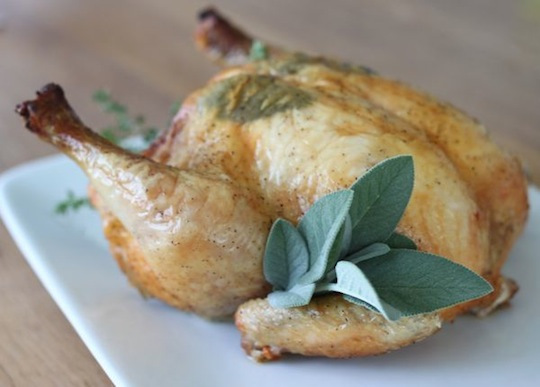 Every home cook should have a no-fail recipe for roasted chicken, one you can count on to always deliver golden skin and well cooked, moist, flavorful meat. So what’s the secret? Well, there are several:
Every home cook should have a no-fail recipe for roasted chicken, one you can count on to always deliver golden skin and well cooked, moist, flavorful meat. So what’s the secret? Well, there are several:
Buy Smaller Chickens
Smaller chickens – those weighing 4 1/2 pounds (2 kg) or less – cook fast and evenly, resulting in moister meat. Unfortunately, many stores only sell whole chickens that weigh 5 pounds (2.5 kg) or more. However, if you get stuck with a big chicken, pre-seasoning can help.
Pre-Season the Bird
No matter what size of bird you have, salting a chicken in advance will make the meat (especially the white meat) more flavorful and tender. Ideally, salt the chicken 24 hours ahead of time, but even a few hours can make a difference.
Season Liberally
As a general guideline, use 1/2 (2.5 ml) to 3/4 teaspoon (4 ml) of kosher salt per pound. Don’t rub the salt directly onto the meat; only rub it on the skin and sprinkle some in the cavity. For extra flavor, add any of your favorite spices to the salt mix and/or tuck fresh herbs under the skin.
Dry Skin = Crispy Skin
If you love crispy, crackling skin then moisture is the enemy. According to the USDA, there is no need to rinse a chicken before cooking it. Take the bird out of its packaging and pat the chicken dry really well with paper towels. Consider keeping the chicken uncovered in a refrigerator overnight (after salting it) which helps dry the skin further, then pat the bird dry again before putting it in the oven. Rubbing butter or oil on the skin can create moisture that prevents crisping up. And don’t baste the chicken while it roasts.
Don’t Roast a Cold Bird
Let the chicken rest on the counter for 30 minutes before putting it in the oven. A cold chicken directly from the refrigerator won’t cook evenly.
Use High Heat
Roasting a bird in a 475 ºF (246 ºC) or 500 ºF (260 ºC) oven might seem crazy (and will create a little bit of smoke) but the results are reliably stunning; crisp skin and moist meat. Roasting at lower temperatures just prolongs the cooking process, making dry or even undercooked meat more likely.
Use a Thermometer
You’ll always pull the bird out at the right time if you know exactly what the temperature is. Inserted into the thigh, the thermometer should read 165 ºF. (74 ºC)
Follow the tips above or the recipe below and you’ll roast a perfect chicken every time.
Serves: 3 to 4
Time in the Kitchen: 10 minutes of prep and approximately 1 hour of cooking time (plus 24 hours to pre-salt the bird)
Ingredients:
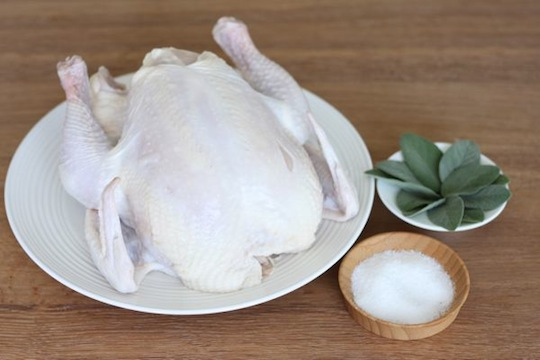
One 3 to 5 pound chicken (1.4 kg to 2.3 kg)
8 fresh sage leaves or sprigs of fresh thyme
Kosher salt (1/2 to 3/4 teaspoon per pound) (2.5 ml to 4 ml)
Black pepper (1/2 teaspoon or more) (2.5 ml)
Add additional spices or herbs if desired
Instructions:
Remove everything from the chicken cavity and cut off the clump of tail fat right outside of the cavity. Thoroughly pat the chicken dry.
Use your fingers to loosen little pockets of skin over each breast and thigh so the skin separates from the meat. Tuck 2 sage leaves/thyme sprigs into each pocket of loose skin so the herbs are touching the meat.
Mix together the salt and pepper (and other spices) and rub all over the bird. Season the breasts more heavily than other parts of the bird. Sprinkle a little bit of salt and pepper in the cavity.
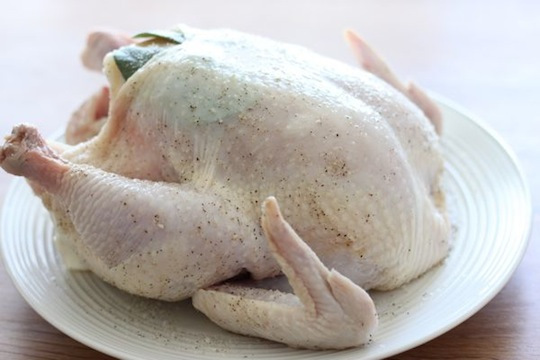
Loosely cover the chicken with a large paper towel or leave it uncovered. Refrigerate the chicken for 24 hours.
Remove the chicken from the refrigerator and pat it dry again. Let it come to room temperature for 30 minutes. Tuck the wing tips in or cut them off.
Preheat the oven to 500 ºF (260 ºC). Place a rack on the second level from the bottom.
Put the chicken in a roasting pan or cast iron skillet breast side up. Slide the pan into the oven so the legs are in the back of the oven. This is so the legs/thighs, which take longer to cook, are in the hottest part of the oven (the back).
Roast the chicken for 10 minutes then give the bird a shove with a spoon or spatula to loosen it from the pan so it doesn’t stick.
For the remaining roasting time, don’t open the oven door or disturb the bird. Keep your oven fan on and plan to open a window, as roasting at 500 ºF does cause a little smoke.
Plan to roast the bird for 10 minutes per pound (50 minutes for a 5 pound chicken) and then check the temperature. When the temperature near a thigh is 165 ºF (74 ºC), the chicken should be done.
Carefully remove the pan from the oven, watching out for hot grease.
Remove the chicken from the roasting pan, pouring any juices that have accumulated in the cavity back into the pan.
Let the chicken rest on a cutting board or plate for at least ten minutes before cutting into it.
Add a little bit of water or chicken stock to the roasting pan or skillet and bring it to a simmer on the stove, scraping the bottom of the pan to release any bits stuck to the bottom. Simmer the liquid to reduce it by half before serving it as a sauce for the chicken.
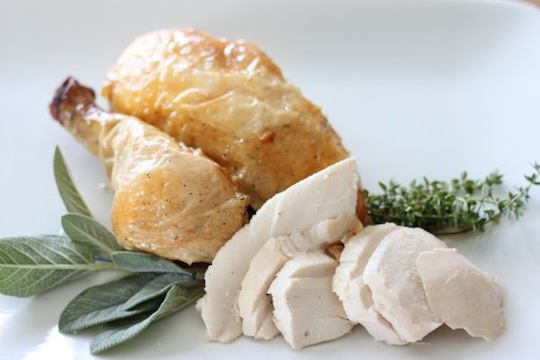
Grab a Copy of Primal Cravings: Your Favorite Foods Made Paleo and Claim Your FREE Gifts While the Limited-Time Offer Lasts!

May 31, 2013
I Feel Healthier, Stronger, and More Energetic
It’s Friday, everyone! And that means another Primal Blueprint Real Life Story from a Mark’s Daily Apple reader. If you have your own success story and would like to share it with me and the Mark’s Daily Apple community please contact me here. I’ll continue to publish these each Friday as long as they keep coming in. Thank you for reading!
 I’d like to start by saying that I’ve always been a “skinny” kid. Growing up I had been called lanky, bones, or whatever name you want to insert here. And at the same time, I was always active. Coming home from school and playing dodgeball, football, basketball, etc., with the neighborhood kids was the norm. Granted I never ate well, but at that age it didn’t matter because of how active I was.
I’d like to start by saying that I’ve always been a “skinny” kid. Growing up I had been called lanky, bones, or whatever name you want to insert here. And at the same time, I was always active. Coming home from school and playing dodgeball, football, basketball, etc., with the neighborhood kids was the norm. Granted I never ate well, but at that age it didn’t matter because of how active I was.
My slender frame stuck with me all through high school and into the first couple years of college. My horrible eating patterns continued and I slowly started putting on weight. I’m talking about daily fast food, tons of soda, any packaged food you can think of, and of course tons of beer. I didn’t remain too active except for a weekly visit to the gym where I’d mostly half-attempt my reps while talking with friends. The “weight” I put on was not very noticeable but it was different for me and I started to get that skinny-fat look some of us are familiar with.
 In March of 2011, my wife and I went on vacation and I got serious about getting in shape. I saw pictures from the year before on our honeymoon, and I didn’t want to hit the beach without some attempt of getting in shape.
In March of 2011, my wife and I went on vacation and I got serious about getting in shape. I saw pictures from the year before on our honeymoon, and I didn’t want to hit the beach without some attempt of getting in shape.
So I did what everyone does when they want to get in shape: RUN! I laced up my running shoes and hit the trails 3-5 days a week for a nice 3 mile or so run. My diet slightly changed by the incorporation of fruits and some vegetables. But I still ate a ton of processed, packaged foods and plenty of carbs to fuel my runs. I continued this pattern until our vacation and I dropped a good 10 pounds.
When we got home from vacation, I had lost any momentum I built prior to the vacation and I started putting on weight again. In November of 2011, I found the nearest gym and signed up for my first membership. I remember huffing, puffing, and sweating on the treadmill until I reached the elusive “400 calories burned” number on the LED. I would continue to hit the treadmill every other day and churn out a solid 30-45 minutes of steady cardio. My diet was still pretty poor and consisted of the typical preservative-filled packaged meals that were low in calories. My favorite was the frozen Tyson chicken fingers that I had with frozen french fries that I could throw in the oven. Even with a diet full of crap food, I managed to drop around 15 pounds.

Even though I thought I was in shape, I continued to sustain random injuries. It started with a knee injury which was diagnosed as Runner’s Knee; so I bought expensive running shoes. But I didn’t get too far until a bulging disc in my lower back caused some back pain and tingling down my leg. I eventually fought through these injuries until I started getting exertion headaches caused by my high blood pressure. The doctor tried putting me on meds, but at 28 years old I respectfully declined. So I did what you’re supposed to do: reduce your sodium intake, which is much harder than I thought. Sodium is in everything, especially my favorite frozen meals. I did the best I could and took some time off to reevaluate my lifestyle.
It didn’t take long after some aimless research when I stumbled across the Paleo/Primal lifestyle. It all made perfect sense to me, and I was immediately hooked on the idea and started further research by reading blogs and articles on websites like Mark’s Daily Apple. I immediately signed up for Mark’s newsletter and completely absorbed the 10 Primal Blueprint Laws.
I cut out all processed foods, including fast food and packaged frozen meals. Grains, soda, and most sugars were out the window. I added in more animal protein and even more eggs, fruits, vegetables, nuts, and healthy fats. I currently never “count calories”, and eat when I’m hungry and stop when I’m full. I also completely changed my exercise habits. I quit the chronic cardio and now focus only on weight training (squatting, deadlifting, pushing, pulling), light biking, and occasional sprints. Needless to say, I feel great and I haven’t experienced any of my injuries that I mentioned earlier. No more pain in my legs or back, and the headaches are completely gone. More importantly, my blood pressure levels have shifted to normal ranges. After a follow up with the same doctor who wanted to prescribe me meds, he was floored by my blood pressure numbers and told me to keep doing what I’m doing.
I still have plenty to work on as I continue the Primal lifestyle. I need to focus on better quality meats and oils for starters, but I know I am on the right track. It does become a challenge to make quality meals throughout the day, but I’ve found some shortcuts like grilling a bunch of meat at once for the week, and utilizing the Crock-Pot. It also helps that my wonderful wife is now a practicing wellness chef, and she’s completely supportive of my new way of eating. My body weight hasn’t changed in the past year, but my body fat percentage has plummeted and I feel healthier, stronger, and more energetic.

Thanks Mark, and keep up the great work!
Eric
Grab a Copy of Primal Cravings: Your Favorite Foods Made Paleo and Claim Your FREE Gifts While the Limited-Time Offer Lasts!

May 30, 2013
The Benefits of Boredom
 No matter how old – and busy – I get in life, when summer rolls around, I still think of the leisure of the season as a kid. As much as I looked forward to the open-ended days of running wild, however, at some point I’d inevitably find myself bored. My best friend would be away on vacation. The weather would be too consistent. Whatever the case, I’d find myself feeling like I’d seen and done all there was to do a million times over. I’d mope and grumble (gaining no sympathy in the process). In those days, there was no gadgetry to surrender attention to. It was mostly the power of invention and imagination – the two best aspects of childhood if you ask me. Eventually, I’d conjure something good enough to get out of my funk. In fact, my greatest schemes and misadventures seem to have came out of those lulls. The thought makes me wonder: in this age of easy preoccupation, do we undervalue boredom?
No matter how old – and busy – I get in life, when summer rolls around, I still think of the leisure of the season as a kid. As much as I looked forward to the open-ended days of running wild, however, at some point I’d inevitably find myself bored. My best friend would be away on vacation. The weather would be too consistent. Whatever the case, I’d find myself feeling like I’d seen and done all there was to do a million times over. I’d mope and grumble (gaining no sympathy in the process). In those days, there was no gadgetry to surrender attention to. It was mostly the power of invention and imagination – the two best aspects of childhood if you ask me. Eventually, I’d conjure something good enough to get out of my funk. In fact, my greatest schemes and misadventures seem to have came out of those lulls. The thought makes me wonder: in this age of easy preoccupation, do we undervalue boredom?
There’s an ecard floating around on Facebook of a woman sitting noting “that awkward moment” of not knowing if she really has time to sit or if she’s just forgetting everything she’s supposed to be doing. There’s adult truth in that – the endless succession of chores, work, bills, errands, calls, emails, and other obligations that overspill every hour of the day. Boredom can seem like such a remote luxury. Why, then, in the free moments we undeniably have do we so mindlessly reach for the gadgetry, newspaper, or whatever else is handy? What do we fear or loathe so deeply about being unoccupied?
Just as I think it’s a good idea for mental health to unplug from the 24/7 media stream, I’d say we do ourselves a service by leaving these gaps unfilled. Boredom certainly stands in opposition to the prevailing culture – a provocative enough feature to get my interest. We shouldn’t have time for it, we’re told, which to me usually suggests something deserves more attention than it’s getting.
Sure, we’re a species that benefited from it’s own selected-for neophilia. We got where we’re at not by drumming our fingers and yawning the day away. Get out there and migrate – darn it! Kill something. Make some better clothes, for Pete’s sake. As the research shows, we all – some of us perhaps more than others, however – are products of a gene that lit a fire under our ancestors. Today, that same “novelty-seeking” characteristic can keep us vibrant throughout our lives as we both enlarge and challenge ourselves with rich experiences. Yet, our ancestors’ ample leisure time was inevitably the resource that inspired critical inventions, imagined novel skills, and elicited pivotal strategies in facets of life as diverse as social relations and navigation for those grand adventures. Our ancestors couldn’t really have had one without the other (although it’s hard to believe they thought of it as boredom). Why do we think we can?
It’s hard to talk about experiencing boredom without also thinking about the worry of being boring as well as bored. I read something the other day that suggested we tend to not care as much about getting “boring” as we get older. As social psychologist and director of Columbia University’s Motivation Science Center, Heidi Grant Halvorson, explains, over the years we tend to be less motivated by accumulating and accessing the “new” in life (e.g. things, opportunities) and more interested in “preserving” what we already have. Likewise, she notes, research suggests we tend to view happiness less in terms of euphoria and more in terms of contentment. Although I think these age-associated patterns make sense, they likely unfold differently for different people. Speaking for myself, I would say I do more “adventurous” activities now than when I was younger, but I didn’t have the time and resources in my younger years. That said, I imagine I probably approach them differently than my 20- or even 30-something self would have. I take my time mountain climbing – not because I need the rest but because I look at the views more. I plan my trips with more time spent on fewer activities. The detail and nuance of experiences matter more to me.
Maybe boredom teaches us something similar. Can life – should life – be a string of stimulation? What do we get out of good old-fashion bouts of boredom? Beyond living in environments of genuine deprivation, it’s more a matter of engagement. Researchers have attempted to define boredom from a neurological standpoint, situating it in the context of attention and labeling it as the momentary inability to “engage in satisfying activity.” Yet, other research and conceptualizations gesture toward what lies beyond the initial agitation. Studies suggest we’re more creative in our work, for example, when we’re bored because we tend to daydream and make novel connections as a result.
Sure, it’s at first a state of frustration and longing (with a little resentment thrown in). When we finally get bored with our own irritation and give up bellyaching about the sensation, however, we end up quieting ourselves, maybe even emptying ourselves, which begins to sound (and feel) rather Zen. We might start to notice details we never have – pictures in the grain of a wooden window sill, the growth of plantings in the yard. We begin to reflect in ways we often miss – examining the arc of our lives, the growth of our kids. We’re open to what’s in front of us – or perhaps what lies deep within us. Either way, we can lose ourselves in that state and access something rich. Boredom – followed to its logical conclusion – becomes its own unique state of flow.
Like the woman in the ecard, I think we easily forget how much we get out of boredom.
I have to admit, as a Type A, it’s a challenge for me to unwind and disconnect enough to leave ample room for boredom, but I recognize it as a subtle but significant element of the Primal Blueprint in practice. I have to push myself toward inactivity and quiet, but when I do I’m always grateful. I’m not only proud of myself for resisting the temptations of all the “at-hand” distractions; I’m treated to a mental re-booting and even a new way of seeing at times. I come away feeling like I’ve followed something knowing and instinctual. Boredom isn’t so much an experience itself but our resistance to an innate level of being. Open the door more often, and you’ll get a better understanding at what’s behind it.
Thanks for reading today, everyone. When was the last time you were bored? How do you make the most of it?
Grab a Copy of Primal Cravings: Your Favorite Foods Made Paleo and Claim Your FREE Gifts While the Limited-Time Offer Lasts!

May 29, 2013
Does Your Blood Type Determine Your Optimal Diet?
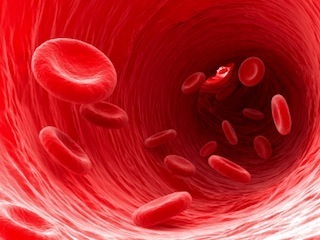 I get a lot of emails about the “Eat Right For Your Type” diet, also known as the blood type diet, which asserts that specific optimal diets exist for each blood type. In this post, I’ll take a look at whether there’s anything to this idea, and whether you should change the way you’re eating based on whether you’re Type O, A, B or AB.
I get a lot of emails about the “Eat Right For Your Type” diet, also known as the blood type diet, which asserts that specific optimal diets exist for each blood type. In this post, I’ll take a look at whether there’s anything to this idea, and whether you should change the way you’re eating based on whether you’re Type O, A, B or AB.
The proposed diets all tend to be pretty decent, whole foods-based ways of eating, and they’re all better than the standard American diet of industrial processed junk, but differences do exist. Here’s the basic breakdown of all four blood type diets:
Type O (PDF): The “original” blood type and the oldest one, proponents claim it evolved among hunter-gatherers in response to their (Primal) diet of animals and plants. People with this blood type do best on meat, fish, and certain fruits and vegetables while limiting starches and omitting grains (especially wheat), beans, legumes, and dairy. It’s pretty much a strict paleo approach.
Type A (PDF): The agricultural blood type, proponents claim it arose after the advent of agriculture. People with this blood type do best on vegetables, fruits, grains, beans, legumes, and limited fish. They should avoid meat, wheat, and dairy. It’s basically a vegetarian diet.
Type B (PDF): The “nomad” type, proponents claim it arose amongst pastoralists raising animals for meat and milk. People with this blood type do best with lamb, mutton, rabbit, and most other meats (except for chicken and pork), dairy, beans, and vegetables. They should avoid wheat, olives, tomatoes, and corn.
Type AB (PDF): The “generalist” blood type. People with this blood type can eat many meats, some seafood, dairy, beans, grains, and fruit, but they should limit kidney beans, lima beans, seeds, corn, beef, chicken, and buckwheat.
I see a few things wrong with their reasoning:
First, they’ve got the anthropology all mixed up. Type O blood isn’t the oldest blood type, nor was it formed by human dietary patterns. The most recent research has found that Types A, B, and O arose almost 20 million years ago in a far-off ancestor common to humans and other primates – long before humans hunted, gathered, farmed, domesticated animals, or even existed. In fact, if anything, it’s type A blood that’s the oldest.
Second, if type A blood arose in response to agriculture, why would the Australian aboriginal diet of meat, marrow, and foraged plant foods, or the Sami diet of reindeer blood, meat, and milk and fatty fish both give rise to a preponderance of type A blood carriers? Type A is supposed to be founded on agriculture – grains, beans, with very little animal products. If a high-animal foods diet selects against type A blood, why does it flourish in these populations?
Third, the justification given for eliminating certain foods from these diets is that the lectins found in them trigger agglutination (clumping) of the red blood cells when consumed by someone with the wrong blood type. So, lectins found in olives are supposed to cause agglutination in Type As, lectins found in grains are supposed to cause agglutination in Type Os, and so on. Proponents claim that specific lectins are selective in their tendency to agglutinate – they interact differently with the various blood types. This supposed selective agglutination is the proximate arbiter of whether a food belongs in a particular blood type’s ideal diet or not, but it doesn’t even exist. The actual research suggests that lectin agglutination is non-selective with regard to blood type. If a particular lectin agglutinates, it generally agglutinates across all blood types. If a lectin is harmful to one blood type, it’s harmful to all.
That said, the blood type diet folks do highlight an interesting observation: the individual blood types are often associated with different rates of certain diseases.
Type Os have a curious relationship to certain infectious diseases. While those with type O blood are more resistant to contracting cholera infections, if they actually get infected, they’re more likely to have an extremely severe reaction. It protects you until you get cholera, after which it leaves you extremely vulnerable. The extreme virulence of cholera to this blood type may even explain the relative paucity of type Os in areas where cholera is common.
Type Os also are far more susceptible to ulcer, now known to be caused by infections from H. pylori bacteria. This is likely explained by the greater preponderance of “H. pylori receptors” in the guts of type O individuals.
Against other diseases, however, type O seems to be somewhat protective:
When compared to other blood types, type O is associated with lower rates of heart disease. The studies (comprising roughly 90,000 people) determined that 6.27% of the cardiovascular disease cases could be attributed to having a non-type O blood type.
Upon reviewing twelve separate studies, researchers determined that type O blood confers protection against pancreatic cancer. Type B was most strongly associated with pancreatic cancer, followed by types AB and A, respectively. Despite the results, “the mechanism by which these SNPs influence risk is unknown.” It could be that “these SNPs may act as markers of allelic variants in nearby genes, and the ABO antigens may not be directly involved in” the development of pancreatic cancer at all. Then, once a person has pancreatic cancer, type O confers a significant survival benefit over the other blood types. This may be explained by the observation in animal studies that the immune systems of types A and B seem to have a harder time at “noticing” and “destroying” cancer cells.
Type Os are also less likely to get gastric cancer, despite their increased susceptibility to H. pylori infections (usually a risk factor for gastric cancer).
These connections are worth looking into and deserve further study, certainly, but they have nothing to say about what diets work best with each blood type.
Obviously, I agree that certain kinds of dietary lectins are problematic, especially if they make it past the gut and into the blood stream. They’re a big reason why I avoid most grains, beans, and legumes – not only do they contain large numbers of lectins, but the lectins they have tend to be particularly proficient at disrupting and navigating the gut barrier. And yes, some people seem more sensitive to dietary lectins than others, but I see no evidence that a person’s lectin sensitivity – and thus ideal dietary composition – is determined by their blood type. It’s an attractive idea, the notion that we can determine someone’s optimal diet and offer them perfect health and protection from disease simply by checking their blood type. It’s just not a realistic one, according to the available evidence.
In the end – and this might be the most important part of this whole thing – the blood type diet “works” because it eliminates processed food regardless of blood type, removes wheat from the diets of people with blood types A, B, and O (which takes care of the vast majority of the population of the world), and recommends that most people (type O is the most common blood type) eat a diet based on meat and plants with little to no grains, beans, sugar,and legumes. I’m honestly not all surprised that so many people get great results.
What about you? Have you tried the blood type diet? Do you know anyone who’s tried it and had success – or failure? If so, what type were they?
Thanks for reading, folks!
Grab a Copy of Primal Cravings: Your Favorite Foods Made Paleo and Claim Your FREE Gifts While the Limited-Time Offer Lasts!

May 28, 2013
Engineering a Better Life: A Reader Case Study
 This is a guest post from Mark’s Daily Apple reader Jack Oughton. This article and last week’s article from Primal enthusiast Jack Yee go to show that there are many different approaches to living a healthy Primal lifestyle. Maybe some of the strategies that have worked for others in the community will work for you as well. Enter Jack…
This is a guest post from Mark’s Daily Apple reader Jack Oughton. This article and last week’s article from Primal enthusiast Jack Yee go to show that there are many different approaches to living a healthy Primal lifestyle. Maybe some of the strategies that have worked for others in the community will work for you as well. Enter Jack…
“It is not a daily increase, but a daily decrease. Hack away at the inessentials.” ~ Bruce Lee
Unlike many of the contributors to Mark’s Daily Apple, I’m not a health and fitness professional. I haven’t got the time. I’m a freelancer, trying to design a happy existence around an incredibly demanding yet fulfilling job, and some semblance of a social life. And do this all as simply as possible.
And that’s why I reached out to Mark. I thought it might be helpful to share what I’ve learned in the last 7 or so years of doing this Primal stuff from the perspective of a “non fitness guy”.
I’d imagine not all of my approaches will be applicable to you, but some might. Take as many or as few as you like. 
Effectiveness, Not Efficiency
So, my main aims are doing things as simply and cheaply as possible. Though wellness is a priority, I think there’s only a finite amount of mental and physical energy we can expend on it before we see diminishing returns, or it detracts from other areas in life.
Thus, I want to spend as little energy as possible on wellness, and get the maximum “bang for my buck”.
And this is where Primal rocks…
Engineering a Better Life
I take a minimalist approach. Inherently the ideas are simple – adding more seems counter to the philosophy of returning to our ancestral roots, right?
So, the first idea is to do away with is willpower (a finite resource that none of us will ever have enough of) and think instead about engineering circumstances to fit your goals. E.g creating an environment that encourages you to express your natural self and do the stuff you need to.
I’ve found it is easier to create an environment which “forces” you to do the right things rather than rely upon willpower. Because when you fight against yourself, eventually you lose. It also takes about 66 days to form a new habit/replace an old one, so perhaps thinking longterm with personal change is the best way to do it.
(Also at the bottom I’ve included books links around this idea of “environmental engineering” for those interested…)
For about two years I have worked from home and have tried to create a living space, workspace and “movementspace” all in one. After much tweaking, I think I’ve finally arrived at something worth sharing…
I wanted an environment that supported the following (not very inventive) goals:
Be Happy (by controlling my time and being able to play to my mercurial life approach)
Be Healthy (by eating well, moving regularly and getting incrementally stronger over the years)
Be Fit & Strong (as above)
Be Productive & Creative (with nutrition that nourishes my brain and an environment that nourishes my creativity)
And As Cheaply As Possible (spend as little time, thought and energy on this as possible)
But no, I’m not an “orderly person”.
One of my core values is chasing some kind of idealised freedom. Which means do what I want, when I want, within reasonable boundaries. Like Mark, if I want to skip a workout, I will. if I want to spontaneously workout, I will.
I’m also impulsive. I’ve never really adhered to a diet or workout plan. A while back, during an experiment with ketogenic dieting I tried to count calories and quickly lost interest.
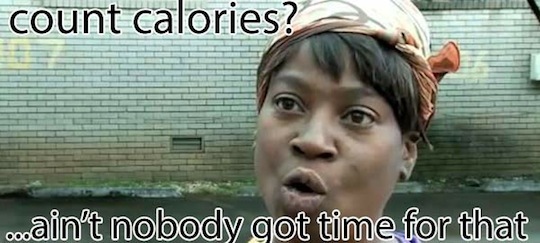
So I’ve found imposing rigid structure doesn’t work, but loose structure does…
In building any system I find that we usually first go through a gathering/construction process by which we acquire a bunch of stuff for later. Later we get to deconstruction and sifting and hacking away the system to its essentials.
I’d use the analogy of the sculptor who first spends his time acquiring the perfect rock and then chiseling it down. Or the bodybuilder who packs on the mass before cutting down to achieve the…”vascular” look (lol).
And after many years at this, I feel I’ve tested and discarded many approaches and things.
Here’s the essentials, the stuff that “made the cut” for my system…
Point #1 – Optimal Health, Not Optimal Adherence

I’m not one who believes that paleo or Primal is the “only way” – AFAIK our goal is optimum health, not adhering to a dietary philosophy, right?
And so, we must perhaps try not to confuse the dietary philosophy, which is a means, as our ends. Primal is our means, and our ends are being healthy and happy, yes?
How?
Like many of us, I haven’t bought in to the “Paleo orthodoxy”. I occasionally eat legumes, regularly use whey protein and will eat large amounts of junk carbs (but no gluten!) on backload/cheat days.
And, asides from the fact that well-timed carb ups seem to support performance and body composition, you only live once right? (or insert your chosen platitude/excuse here…)
Because IMHO no single template, no matter how well designed, fits everybody precisely…
Point #2 – Move More to Do More
From someone who was mostly sedentary before embracing this way of life, I’m happy to say I’ve gotten completely out of the habit.
I find my energy to wane if I sit in any spot for too long, which causes my productivity to suffer. Since I’m not paid by the hours I work, but by the project I complete, this is no good.
Like most of us, I want to spend as much time as possible at high energy but be able to switch off into a state of relaxation when I need to. Put another way, I wanna have a clear distinction between work and play. This is important as a freelancer (and an area I have seriously screwed up in the past).
How?
I do this by having what I see as multiple workstations, depending on the season (e.g the garden and a nearby coffee shop count as “workstations”). This usually stops me getting “stale” in any one environment and also I get to be social when “out working” – another important thing for the solitary freelancer.
I also avoid this “staleness” by cycling between projects (something I’m lucky enough to be able to do) and using “fasting days” in which I find my work focus is sharpened by a combination of the fasted state and hilarious quantities of black coffee.
The result? These days I find myself spending less time in front of the screen but getting more stuff done when I’m there. Complete freedom from the the desk has been achieved.
Next I’m trying for complete freedom from the computer…
Point #3 – Too Comfortable Is Uncomfortable
Just an opinion here, but methinks too much comfort is not desirable.
So my approach is to make things more uncomfortable. To impose stresses that force me to move, and make exerting myself part of the day to day. Maybe it’s a little old fashioned, but I also believe there’s truth in that old cliche of too much comfort “softening” up people.
Mark’s already gone into the dangers of too much sitting, but I also believe “sensitising” ourselves to comfort makes times of relaxation all the sweeter. Lemme give you an example…
Us humans tend to devalue/take for granted any stimulus we are repeatedly exposed to. E.g if you live next to a railway line, eventually you’ll stop noticing the sound of trains rolling by.
So for me, having less comfort overall makes the times I do decide to do something relaxing far more enjoyable. It also aids my sleep, since I’ve basically tired myself out in the day.
How?
Standing more - Mainly via my standing desk, which cost about £12 to make. I went to a builder’s merchant and asked for about 50 shiny new bricks (sounds absurd now that I mention it). I put my existing table on the bricks and… voila!

Floor Living/Chair Avoidance – I’ve mostly substituted chairs for working on the floor, usually cross-legged, but in often in whatever position the body wants to do. Asides from getting good at the Lotus Position, this also ensures I move around a lot, since the floor was not designed to accommodate any position for a prolonged period. This applies to mealtimes as well (though rarely when dining with company…)
Futon – I swapped a bed for a Japanese-style futon. It saves me space and time messing around with a mattress. It seems to be good for my back as well (strong support), and cost about £30 – way cheaper than a regular bed and mattress.
Greasing The Groove – (see next section…)
Point #4 – You Don’t Need the Gym to Get Stronger
Confession: I’ve never been to a “proper gym” (if we’re honest it’s a combination of being a cheapskate and being slightly weirded out by the idea of people watching me squat).
Also I think most of us don’t agree with a lot of people’s approach to exercise, which is trading one screen and cubicle in the workplace for another in the gym.
So my approach is to see training and movement as almost the same thing, and do all of my training at home or as part of my regular movement outside the home.
I also find it to be pretty cheap and time effective as there’s no gym dues or gym travel involved. This way I can “be active” when the impulse strikes, which as I said before is important to me…
How?
Greasing The Groove…
With a Pullup bar. I have one above my door, which I often set myself the challenge of doing a certain number of reps on before I enter/leave the room. I think Russian “strength Czar” Pavel Tsatsouline calls this approach “greasing the groove” and the habit of doing pullups on the door every time you pass through quickly gets established.
Or with “kettlebell complex coffee breaks”. I also do this by taking intense coffee breaks involving kettlebell complexes.
These are really time effective. I’ve not got the space to describe it here but in a complex you basically don’t get to put the weight down ’til you’ve completed your set. This tires you in a very short period of time.
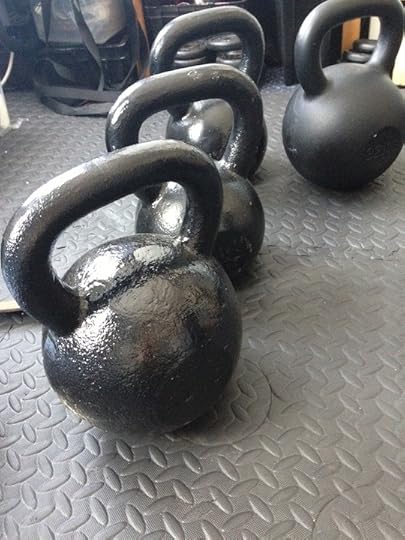
Provided you don’t go nuts and smoke yourself, it’s quite invigorating and you return to work pumped. Google for some example complexes…
Doing Stuff “The Hard Way” – Then of course there’s the simple things you can do in daily life away from the home. Why take the elevator if you’ve got the stairs in front of you? I’ve found doing the regular little things like this help build habits conducive to health, long term.
Weighted Hiking – As an urbanite, I’m lucky enough to not need a car, and I walk to as many places as I can. I do this mainly in the form of what I’m now calling Food Hiking™ (not an actual trademark…) – taking a 4 mile round trip to my local supermarket and buying a lot of food, which I carry back with me.
For the days I want to do this but don’t need to obtain dinner, I bought a cheap rucksack on Ebay which I fill with weight. I put it on and go walking. My normal route is hardly a scenic one (much of it is beside a motorway) but getting out is invigorating all the same. I average about 20 miles of walking a week this way and it gives me time and space to think…
Are you making the most of your freedom?
I dunno about you, but I’m pretty sure that our ancestors were, on the whole, free of the “rat race” and the 9-5 so many of us take as a given now (see the “original affluent society” theory).
Perhaps freedom can be defined as “control over your time and choices”. For me, I have tried to free up my time as much as possible and avoid the kind of commitments that take away my time and money, no matter how well marketed/advertised they are to me.
Ways to cut costs and limit expenses using technology are an entirely different article, and we’re talking wellness, not personal finance here, right?
But perhaps the last thing to consider when engineering your ideal environment is how you maximise your amount of free time, and how it’s spent. We all have different commitments, many of them are unavoidable. But not all of them.
Of the things you do now, which do you really love? And, if you had to start again, of the all things that you are doing now, which would you keep?

Because you can always start again…
Thanks for reading.
Further Reading
• Nudge: Improving Decisions About Health, Wealth, and Happiness – Richard H Thaler, Cass R Sunstein
• Change Anything: The New Science of Personal Success – Kerry Patterson et al
• Lifehacker’s article on “The Pareto Principle” – Focusing on the most important stuff. Can you apply this idea to the things you do?

Jack Oughton Bio
Jack Oughton, AKA Koukouvaya is a freelance writer/copywriter, composer/sound designer and digital artist/photographer from South London who has serious problems writing biographical information about himself in the third person. He has written for the likes of The Guardian, The Independent and FHM, and currently spends all day sculpting alien sounds using wavetable synthesis. He can be found on Twitter as @koukouvaya
Grab a Copy of Primal Cravings: Your Favorite Foods Made Paleo and Claim Your FREE Gifts While the Limited-Time Offer Lasts!

Mark Sisson's Blog
- Mark Sisson's profile
- 199 followers



